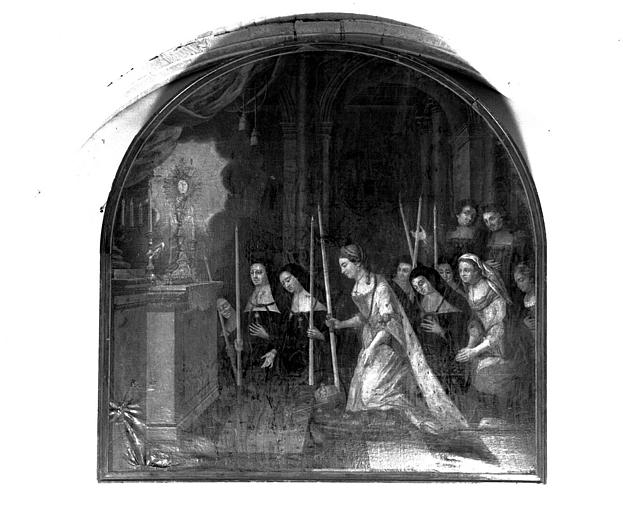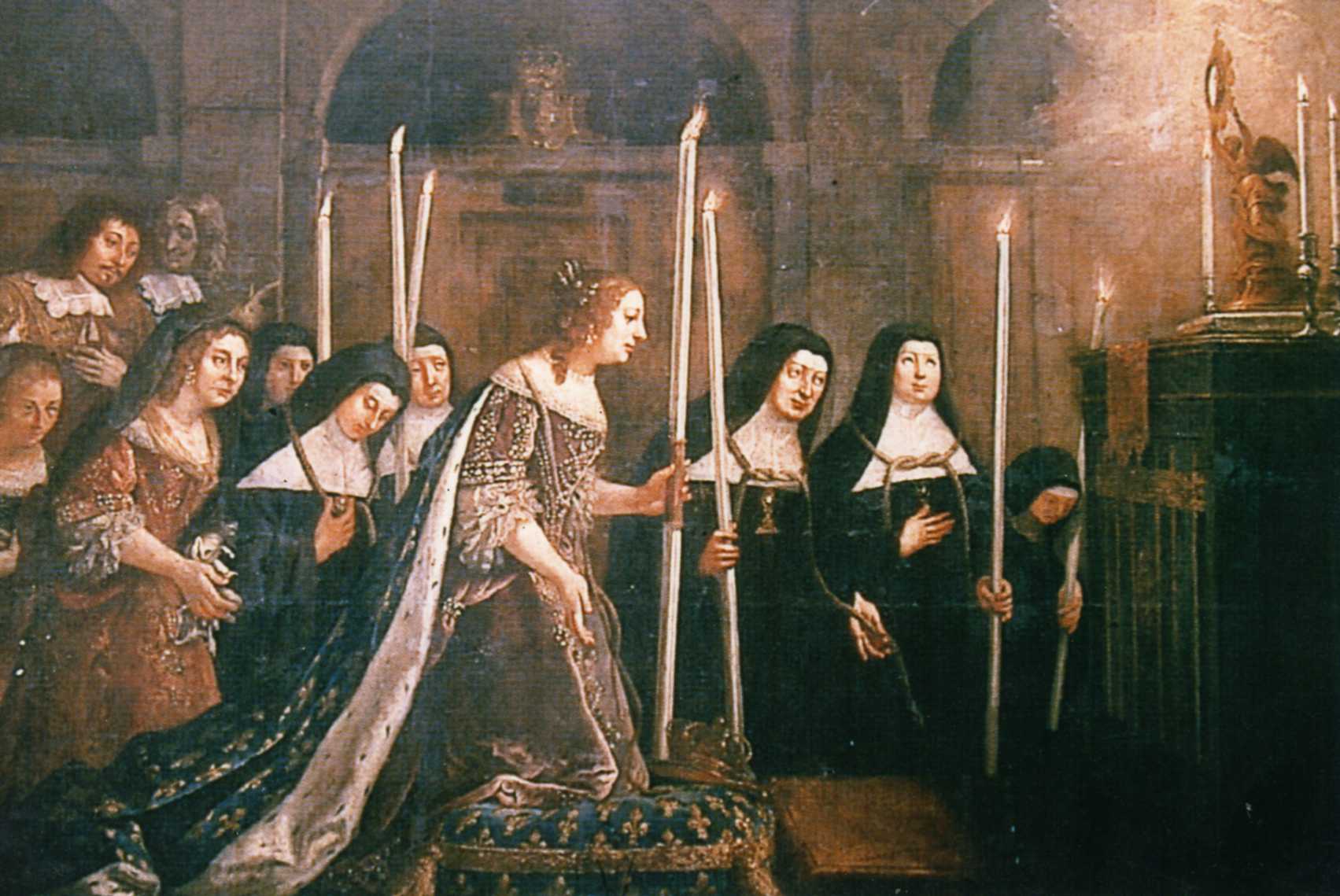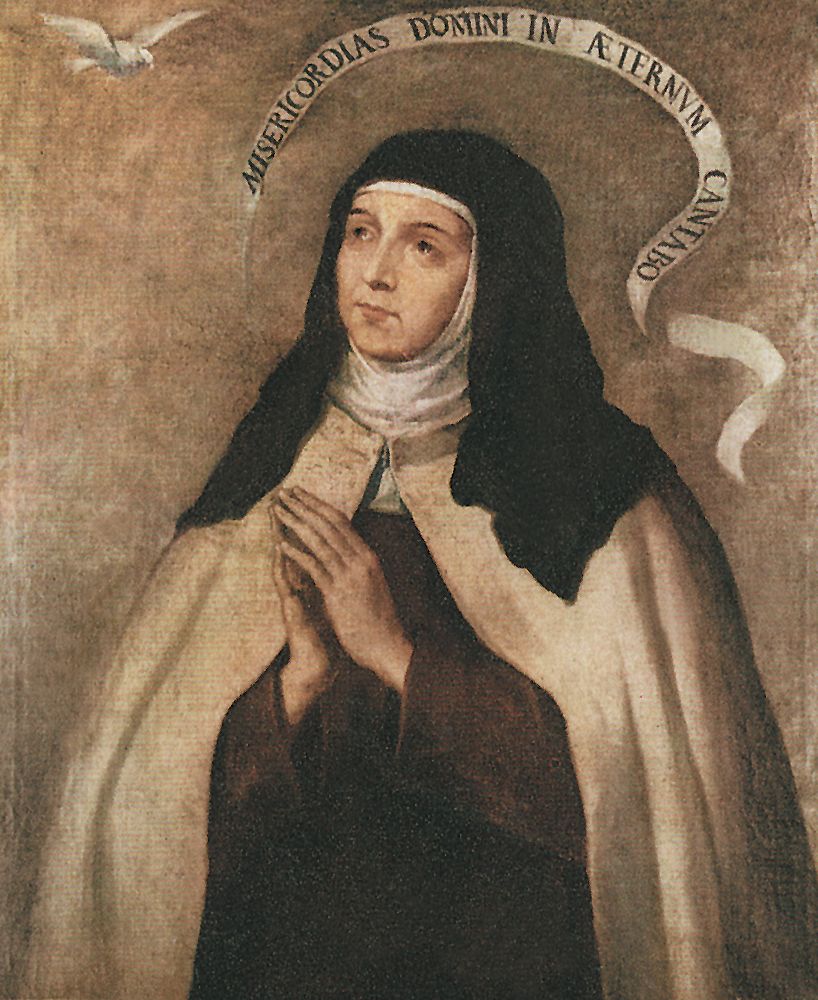Mother Mectilde and Adoration, Part V: In the Crucible of Love
 This is part V in our series of articles about how Mother Mectilde began the life of the Benedictines of the Perpetual Adoration. Click here for part I , here for part II, here for part III, and here for part IV.
This is part V in our series of articles about how Mother Mectilde began the life of the Benedictines of the Perpetual Adoration. Click here for part I , here for part II, here for part III, and here for part IV.
Stability Amidst Life’s Chances and Changes
One of the most encouraging things about the lifelong journey of Mectilde de Bar is that she was often obliged to leave one place for another, to begin afresh, and to adapt to new circumstances. Again and again she experienced change, keeping always her heart fixed where true joys are found: in the adorable Sacrament of the Altar, as in the heavenly sanctuary not made by hands.
Trust and Perseverance
In times of social upheaval and unrest, as in times of upheaval and unrest in the Church, the ideal of monastic stability is often shattered against the jagged rocks of reality. Happily, God calls us, not to an ideal, but to utter trust in Him and to humble perseverance in the face of things as they are — imperfect, gritty, and disappointing — even if this means beginning afresh over and over again. Catherine Mectilde de Bar is a model of just this. God can and does, in fact, use such paradoxical and disconcerting circumstances as a crucible in which he hammers out something something new, something purified, something conceived in the infinite love and wisdom of His Heart.
By God’s providence, Mother Mectilde was surrounded by supportive and faithful friends who believed in her vocation and made sacrifices in order for her work, Our Lord’s work, to prosper. Thus, when it became clear that, because of the lack of space at the house in the rue du Bac, the little community had to relocate once again, they were able to move to a rented house belonging to Madame de Rochefort in the rue Férou, close to the church of Saint-Sulpice. There, on 12 March 1654, the Father Prior of Saint-Germain-des-Prés, Dom Roussel, who by this time had nuanced his opinion of Mother Mectilde’s community, established the monastic enclosure.
Memorable Day
On the same day, the mother of Louis XIV, Anne of Austria herself, arrived at the new monastery with an imposing retinue of courtiers. She directed Dom Roussel to afix the cross to the wall above the door of the house, and established it officially as a royal foundation. Dom Roussel blessed the bell, the oratory, and the regular places. During a Solemn Mass, a Carmelite of Les Billettes, one Père Léon, preacher to the Queen, delivered the sermon. At the end of Holy Mass, the Blessed Sacrament was exposed in the monstrance.
The Amende Honorable
That afternoon, la musique du Roi, Louis XIV’s own musicians, presented their homage to Jesus Christ, the Eucharistic King enthroned upon the altar. Then, before Benediction of the Most Blessed Sacrament, Anne of Austria advanced to the middle of the choir, knelt in adoration, and with a cord about her neck and a burning taper in her hand, read the Amende Honorable, or act of reparation, composed by Mother Mectilde. As the Queen gave utterance to Mother Mectilde’s prayer, it was the voice of France that reached the ears of God, making reparation for the countless offenses, sacrileges, and outrages perpetrated against the Sacred Host.
The Painting
Philippe de Champaigne (1602-1674) immortalized the solemn scene in the painting reproduced above. Looking at it from left to right, we see two gentleman courtiers, finely dressed. The one whose face is in shadow is whispering a comment to the other, while he points to the altar. His companion is listening to him, but appears more recollected and moved. His head is bowed; his face bears an expression of sweetness and compunction. Kneeling in front of the gentlemen are two ladies in waiting; they too appear awed by what is taking place. They have to take their cue from the Queen. There are six Benedictines, each one with the cord that symbolizes identification with the Suffering Servant about her neck, and a burning candle, the symbol of readiness and love, in her hand.

Anne of Austria
Anne of Austria has removed her crown and placed it on the cushion at her feet, leaving her bareheaded. She too wears the cord about her neck, and carries the burning candle, a sign of her self-offering in adoration and in reparation. For all her royal finery, her face reveals an inward simplicity of soul. One senses that she is a good woman.
Face to Face
Mother Mectilde is the figure next to the Queen. In Mother Mectilde’s features, there is gentle majesty. Her whole being appears drawn to the altar, to the monstrance, to the Eucharistic Face of the Son of God. Of all the faces depicted in the painting, that of Mother Mectilde is, I think, the most expressive. The little nun crouching next to the altar represents l’anéantissement, en-nothingment, profound humility in the presence of the Divine Majesty.
Our principal application in prayer must be to hold ourselves before the greatness and supreme majesty of God in the Most Holy Sacrament, with the most profound respect, with total confidence and abandonment, with submission, accepting simply all the dispositions of Divine Providence, each one according to her degree of grace, either by making acts [of prayer] or in some other way. (M. Mectilde du Saint-Sacrement)
To be continued.
Share this:
- Click to share on Twitter (Opens in new window)
- Click to share on Reddit (Opens in new window)
- Click to share on Facebook (Opens in new window)
- Click to share on Pinterest (Opens in new window)
- Click to share on X (Opens in new window)
- Click to share on WhatsApp (Opens in new window)
- Click to print (Opens in new window)


